Australia So Much to See
Copyright (C) 2013 AustraliaSoMuchtoSee.com. All reights reserved
Coober Pedy - Life and mining in and around Coober Pedy in the past
Old Timer’s Mine is a must-see. With a self guided tour around the former mine, displays show how it was. There is a museum
where parts of the first opal found have been loaned by the Hutchison family. Rooms display how dwellings looked in the 1920s
and in the 1960s.
The mine which dates back to 1916 had been abandoned and back filled. No-one knows why this mine was abandoned at that
time. This mine was only rediscovered in 1968 when extensions to a dwelling broke through into the old excavations. Rich
in opal, this mine has been maintained for display purposes.
This pocket of was found while the present shop area was being tunnelled in 1987 (photos at right). No-one knows how much opal is
behind this seam.
The first opal. In 1915 a gold prospecting team was sent into the area by New Colorado Prospecting Syndicate from Adelaide. They reached the area and were low on water so while the men went searching for a water source, team member Jim Hutchison’s fourteen
year old son Will was left at camp. When the men returned at dusk to find Will was not there, and the cold ash in the fire indicated
he had been gone some hours. Panic was allayed when Will arrived safely with a smile, carrying a half filled sugar sack. “Have a look that that Dad. I think you will find some good stuff there.”
The Hutchison Memorial twelve kilometres south of the town overlooks the field where Will Hutchison made the first opal discovery. Numerous tracks across the flat area have been used by self sufficient campers as a base while touring Coober Pedy.
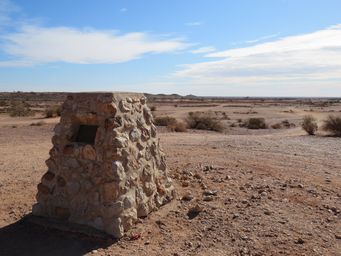
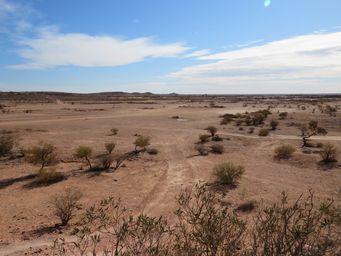
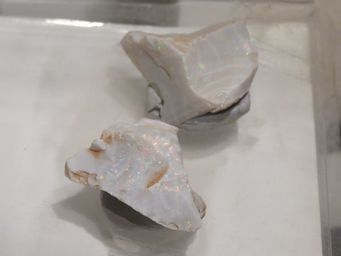
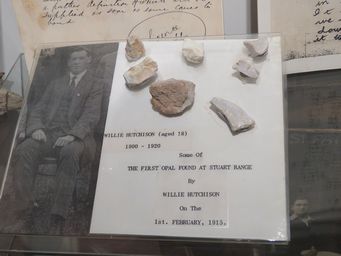
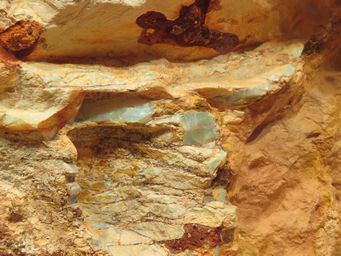
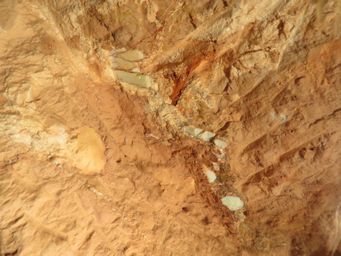
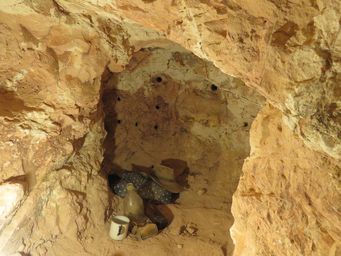
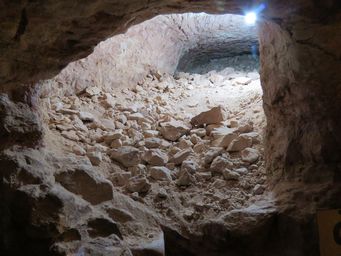
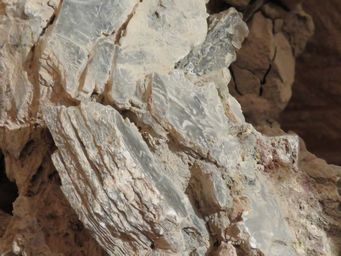
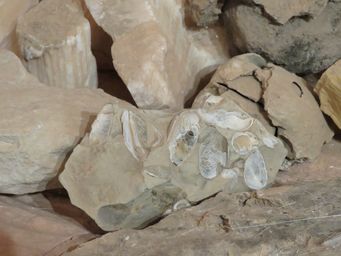
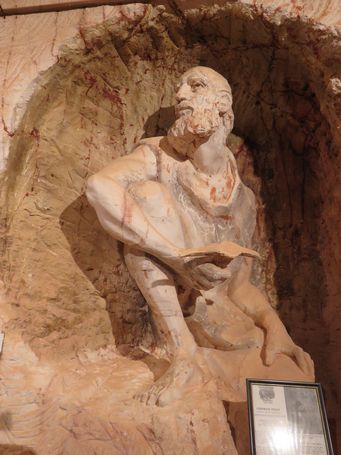
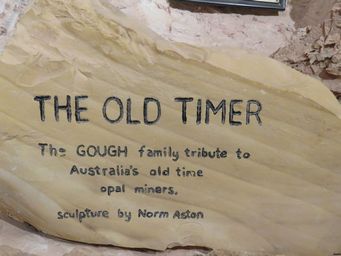
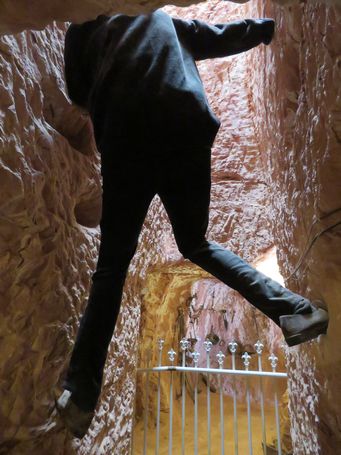
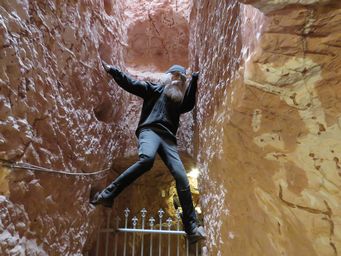
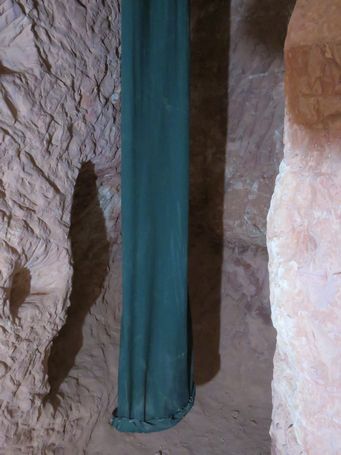
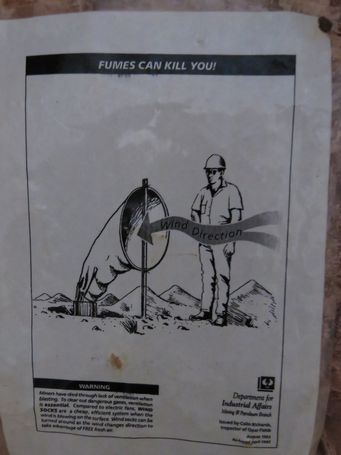
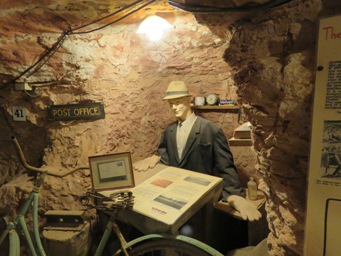
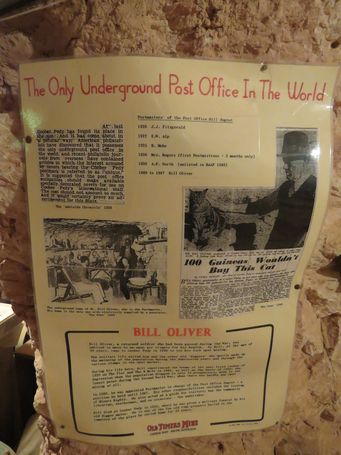
As you walk and duck through the caverns and tunnels of the Old Timer's Mine, you will see small caverns as below, and scenes as below
right, where a miner's simple belongings are displayed in a cavern where explosive holes have been drilled into the back
wall.
The lower photos show displays of potch (worthless colourless opal) and fossilised shells, both of which are
common in the opal fields.
This carving of a miner (at left) was commissioned by the Gough family as a tribute to the opal miners of the past.
Above and right show a dummy of a man climbing out of a mine, using grooves as footholds. This was a common way of accessing
mines.
Below demonstrates a windsock, a method of bringing fresh air into the mine, particularly necessary when
blasting.
The underground Post Office display in the Old Timers Mine represents the underground Post Office which operated from Post Office
Hill between 1920 to 1947.

















